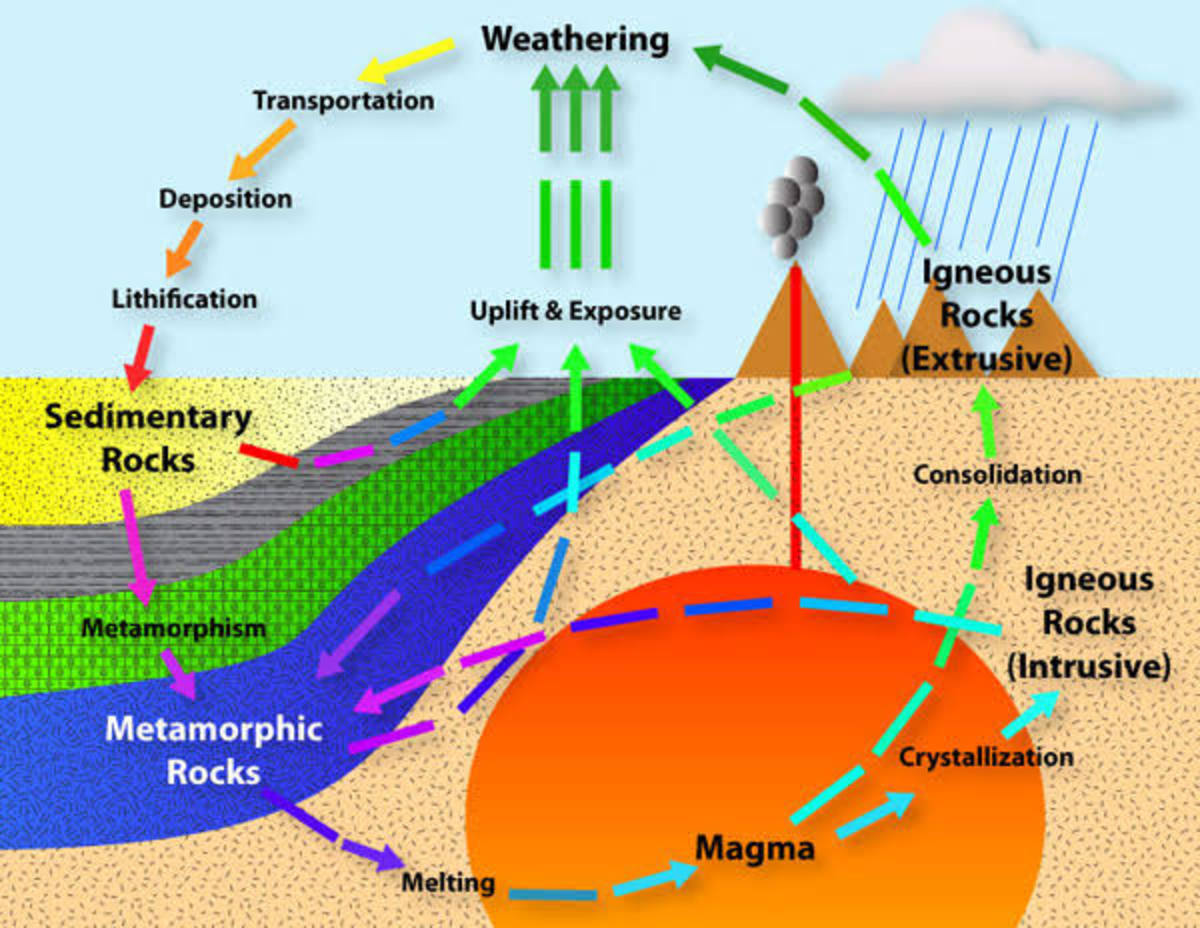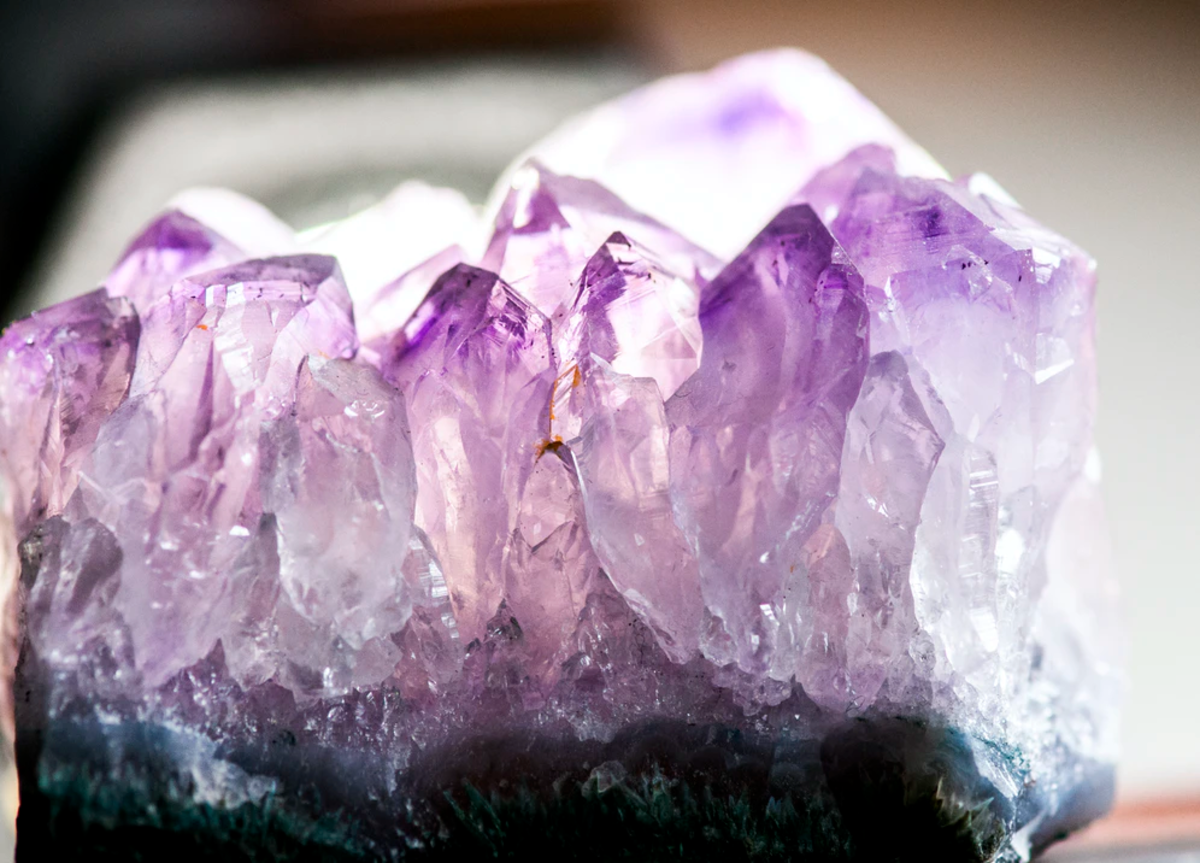You Are Here: And It's An Amazing Place
The Milky Way Galaxy
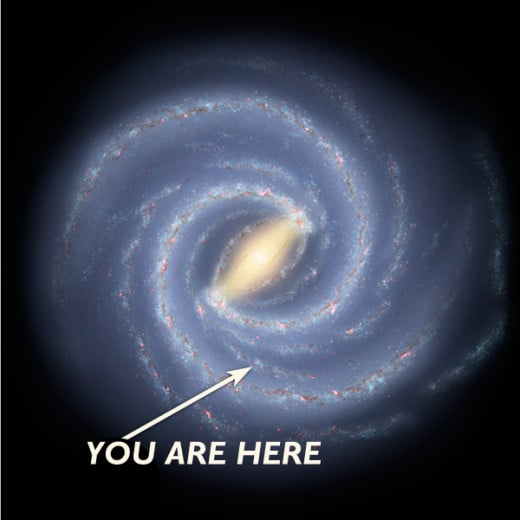
Above and Below You
You do it every day: step outside. Have you ever thought about what's below you? What's above you?
It's not exactly the Devil and the Deep Blue Sea, but those are passable metaphors for the mind-boggling wonders right above us and below us. It's a little thrilling, and a little scary, to realize just where we're standing.
What's Up?
First of all, look up. That blue sky you see is our planet's atmosphere diffusing the light of the sun during the daytime. (At night, the air causes stars to shimmer).
The only thing between you and the vacuum of outer space is air: not quite emptiness, as we now know, but it's just a thin layer of gases hugging the planet like water vapor over a cold drink. There's no roof. Nothing holding it in but gravity. There's air, and then less air, and then...truly empty space, trillions upon trillions of miles of cold, deadly void, about -400° F.
At three miles up, breathing becomes difficult. Think about a three mile walk: that's not a very great distance! At five miles up, there's not enough oxygen to survive. The last wispy molecules of atmosphere are drifting off into space around 6000 miles from the surface.
Looking Down From Above (ISS, 240-200 Miles Up)
To Infinity and Beyond
That precious, flimsy envelope of nitrogen, carbon dioxide, oxygen and other gases is a tissue-thin halo around our planet. (Earth is about 7,900 miles in diameter). Yet that blanket of air burns up most of the meteorites headed our way, protects us from solar and intersteller radiation, keeps us warm, and makes life possible.
Beyond Earth's atmophere, we quickly soar off into unimaginable distances. It's 93 million miles to the Sun. Even from within our own solar system — in Saturn's neighborhood — planet Earth looks like a dot. Our solar system in turn is just a grain of sand in the Milky Way Galaxy, a glittering island of stars 100,000 light years across (one light year is about 6 trillion miles) in the cosmic ocean. There are billions of galaxies out there in deep space, separated by distances that make our galaxy itself look like a gnat on the brow of God.
Look up. Be awed by that gentle breath of wind brushing against your face, separating you from nearly infinite empty space.
Earth, the "Pale Blue Dot"
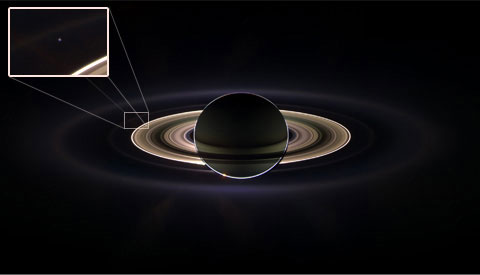
I Feel the Earth Move Under My Feet
Well, not right now, but I live in a part of the world where I was asked, "Did you feel that earthquake yesterday?" as recently as last Thursday (Answer: no, it was only a 4, and I was driving). I have the current earthquakes page on Caltech bookmarked on my browser the way people in other parts of the country bookmark the local weather forecast.
Moving to California has made me even more keenly aware of plate tectonics, the movement of the earth's thin crust over its molten interior.
How thick is that crust of rock under our feet? Compared to the size of the Earth itself, it's only a skin:
Thickness of the Earth's Crust in Kilometers
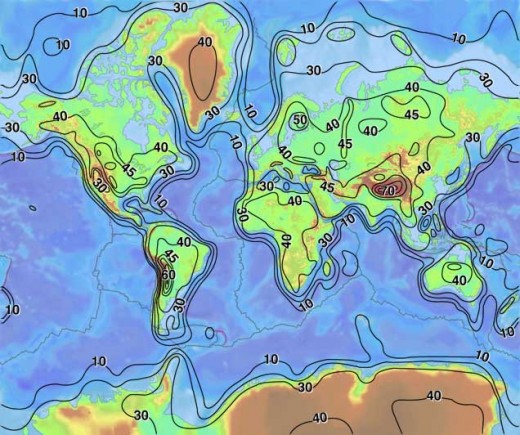
Walking on Eggshells
The Earth's land masses are mostly 20 to 30 miles thick. Your morning commute may be farther! Below that is the mantle, a zone of "ultramafic" rock under such crushing pressure that it can't even melt, despite being heated to thousands of degrees. Instead, it flows like clay. Also, the rare mantle rocks that have been squeezed up from below are green!
It's hard to comprehend that we're standing on a very thin rocky crust with thousands of miles of incredibly dense, unbelievably hot, green rock that oozes and flows underfoot.
Rocks From Earth's Mantle: Green?!
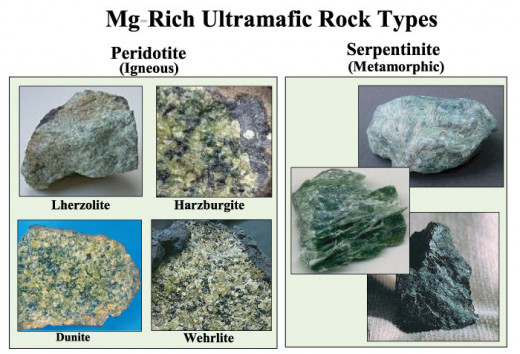
Liquid Diamonds at Earth's Core
In some places, the Earth's crust is even thinner. The ocean floor is only 3 to 5 miles thick, and there are rift zones like Death Valley that are stretched out like taffy to a few miles' thickness. That's not much solid rock between us and an inferno!
It gets even wilder as you go down. 1800 miles below our feet is a liquid outer core of molten metal, spinning and sloshing around like a Mars-sized electromagnet to create our planet's magnetic field. Inside that, there's a superheated solid inner core of the Earth compressed so tightly that it's become a solid crystal, like a metallic diamond. [Learn how scientists map the Earth's innards]. It's heated to over 10,000° F, it's radioactive, and it may have been there since the Earth first coalesced.
This is deep stuff. And hot stuff. Earth's core is as hot as the surface of the sun. It's below us all the time while we go about our daily lives. Dante's Inferno is a tempest in a teapot compared to the Earth's interior.
The Earth's Interior
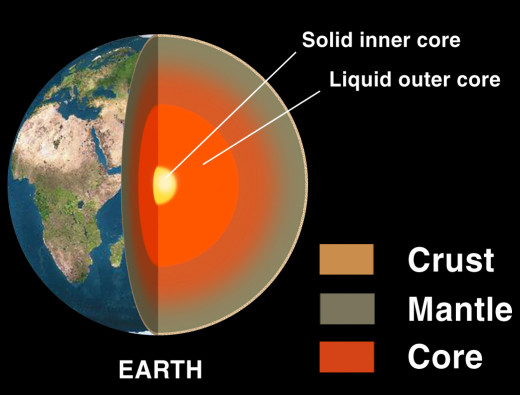
Look Up. Look Down. Back to You.
That's where we live on this thin skin of Earth, under a thin sliver of sky, between cold infinity and a molten inferno.
Step outside. Look up. Look down. Be amazed.
Or, to quote Shakespeare,
There are more things in heaven and earth, Horatio,
Than are dreamt of in your philosophy.— Hamlet



